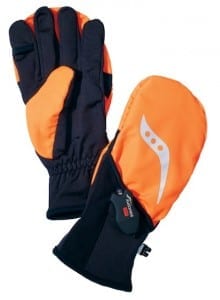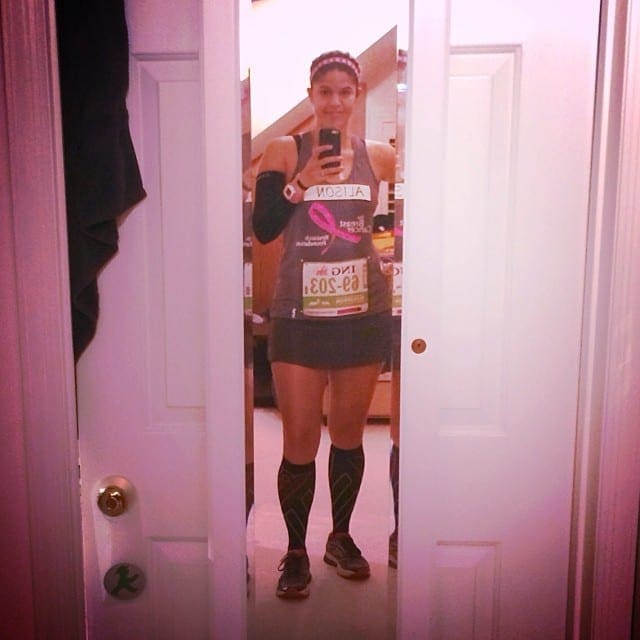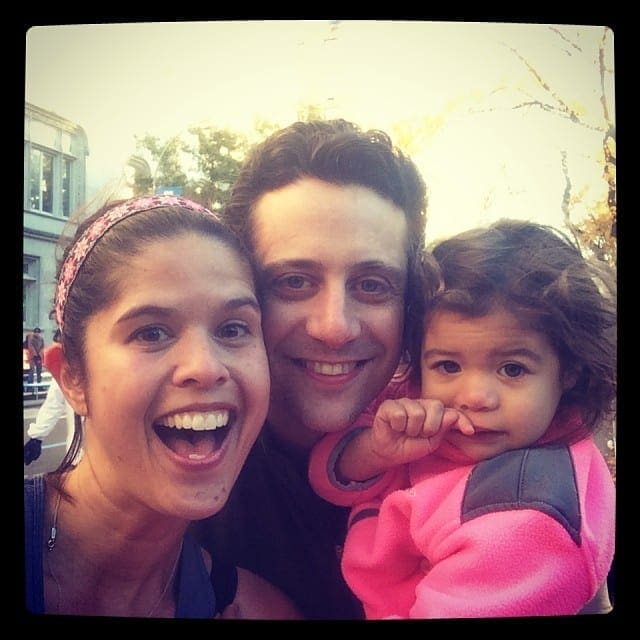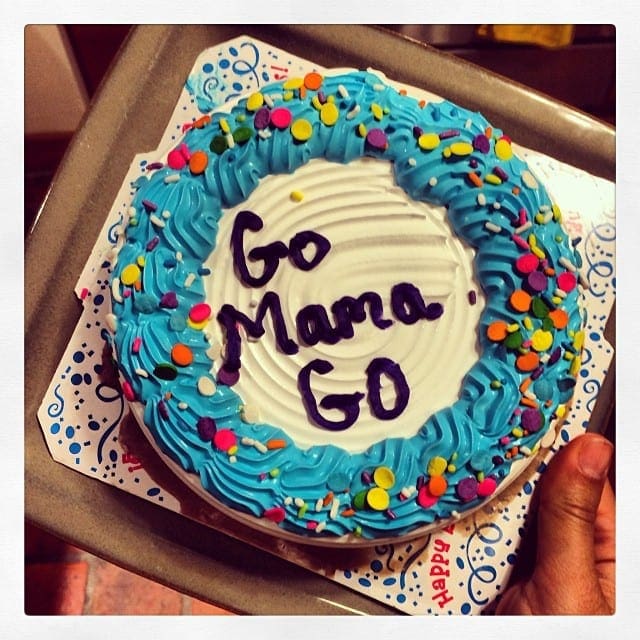Travel Talk: Runs From Around the Country
Fresh off their final 2013 trip, Sarah and Dimity recall running adventures from this year’s travels. Some scorchers stand out in their collective memory, including revisiting slogs along the American River in Sacramento and the Hudson in Albany and outside Washington, D.C. (Suffice to say, they were not capital runs.) They rave about their St. Louis excursions, and SBS waxes eloquently (read: semi-drones) about the homes in one grand San Antonio neighborhood. Sarah tries to rally listeners to start doing her 21st-century version of a boombox while running. And find out what words Dimity is trying to expunge from her vocabulary.
If you’re digging our podcasts, we’d be super-grateful if you’d take a minute (because we *know* you have so many to spare!) to write a review on iTunes.
**Also, the quickest way to get our podcasts is to subscribe to the show via iTunes. Clicking this link will automatically download the shows to your iTunes account. It doesn’t get any simpler than that!
Tell Me Tuesday: A Dozen Ways To Help ith Raynaud’s While Running

After many winter runs, my fingers resemble these ivory candles. Just substitute fingernails for wicks.
If the folksy aphorism, “Cold hands; warm heart” is true, my blood-pumper must be a blast furnace. Like many runners, especially XX ones, I suffer from Raynaud’s disease, a condition that makes parts of the body (especially hands and feet) go cold, numb, and pale in response to cold or stress. If I’m not hyper-vigilant, my fingers can look like cream-colored candles for hours after a frosty run. More distressingly, my hands are either numb and clumsy or painful and tingly, too.
To save other mother runners (and myself!) from the discomfort of Raynaud’s, I collected antidotes and preventative measures from other cold-clawed runners. Some of the dozen suggestions obvious (hello, mittens!), others more inventive.
PRE-RUN
Steer clear of caffeine. Several gals, including Eileen, told us on Facebook that they’ve found eliminating java helps keep extremities a bit more flush.
Give ’em a blast of heat. Starting off with toasty extremities helps stave off discomfort later, so run hot water over your hands and feet (then dry them off) or carefully hold them over the stove. (I have a gas stove, and my hands get very warm when I hold them a 12”-18” above a medium flame. But, seriously, be cautious and vigilant.)
Lube ’em. Jill swears by slathering on a “very heavy hand cream with a beeswax base to create a barrier” before she pulls on gloves or mittens. Assuming same would work on the footsies.
DURING
Gloves, then mittens. While I wear capris, not tights, all winter, I sport gloves even when the temperature is closer to balmy than freezing. And when the mercury drops below about 35, I switch to mittens, allowing my digits and palms to make their own private biosphere. Many mother runners told us they wear two pairs of gloves.
Slip in hand warmers. These chemical packs are the trusted tools of countless mother runners, according to suggestions solicited on our Facebook page. Best worn in mittens, obviously, and bought in bulk at Costco. Great $-saving tip from Karen: Put hand- or foot-warmer in Ziploc bag after run to be able to re-use it. (They work by being exposed to air.)
Wear arm warmers or compression socks. This tip comes to us from Jen, who reminded us the promoting circulation to the extremities is key.
Sport an extra layer and a hat. Keeping the rest of your body sufficiently warm, helps “prevent spasms in the extremities,” wrote certified athletic trainer (and mother runner) Ali.
Chill. As in, try to stay relaxed around your neck and shoulders, and don’t clench your hands. JoAnn, a Raynaud’s sufferer in Minnesota, says she shakes her hands out a lot on runs.
POST-WORKOUT
Do a quick change. School prep and carpool often mean a delayed shower, but I change out of my wet top(s) and sports bra almost as soon as I untie my kicks. For this small-busted mother runner, I usually just strip bare to the waist in our front hall, then put on a fleece jacket. Whatever works for you, but I’ve found getting out of sweaty sports bra is key to keeping my hands flesh-colored, not waxy. Take a shower or hot bath as soon as schedule allows.
Have a (decaf) cuppa. Coffee, tea, or chai: Serve yourself your hot drink of choice for a two-fold effect. The beverage warms you up from the inside out, while grasping the hot mug brings relief for your mitts.
Shake ’em out. Once I start to lose feeling and color in my hands, I pretend like my arms are enormous thermometers: I whip my hands downward from my elbows toward the floor—as if I’m trying to drive mercury back down into the bulb of an old-fashioned thermometer. (Am I dating myself with this analogy?!) The force of the whipsaw motion forces blood down my forearm and into my hands. Christy swears by, “big arm circles.”
Alternative treatments. Katie, a massage therapist, swears by connective tissue massage. She’s had great success with it on a client suffering from Raynaud’s. Other longer-term solutions some sufferers find effective are biofeedback and acupuncture.
Now it’s your turn: How do you keep your hands and feet comfortable while running?
Feel the Gratitude

Mother Runner Emily Sallee runs on behalf of Shriner’s Hospital of Portland during the Cause + Event run.
In this Thanksgiving week, Sarah and Dimity start off the show by discussing running-related things they are grateful for, such as temperate climates for year-round running, nearby BRFs, and the vitality our fair sport provides. “Running is the time I feel most alive,” confesses Dimity. Then the ladies bring on Amy Little, a mother runner of two who allows runners to give back in a major way: Through the race she organized, Cause + Event in Portland, Oregon, racers can donate to the charity of their choice. Amy talks through how she hatched the race concept and has seen it through to the point of writing checks to 62 (62!) non-profit organizations. Oh, yeah, and Dimity talks turkey. Literally.
If you’re digging our podcasts, we’d be super-grateful if you’d take a minute (because we *know* you have so many to spare!) to write a review on iTunes.
**Also, the quickest way to get our podcasts is to subscribe to the show via iTunes. Clicking this link will automatically download the shows to your iTunes account. It doesn’t get any simpler than that!
What Would Another Mother Runner Do? The Case of the Missing Shoes
It’s Saturday afternoon, day before the New York City Marathon. I was obsessing a little over what to wear the next day; it had been so unseasonably warm that I hadn’t trained in cold weather gear and had planned to wear shorts and a tank, but now they were predicting 30-degree weather while we waited to start in Staten Island, then 20 mph winds while we were running.So after trying on about four different outfit combinations, right down to different socks and headbands, I decided I was losing it and left the house to get a pedicure and chill out.
When I got back mid-afternoon, I felt great; time to just not think so hard, pull together my pile of race stuff, and let it all go, right? Right. I started making the pile, and couldn’t find my shoes. I thought I’d left them in front of my closet in my room, but no dice. Checked the bathroom. Checked my office. Checked the family room. Checked every bag I’d used in the last couple weeks, even though that didn’t make sense, because I’d just worn them the previous morning for an outdoor pre-work run.I started feeling a little panicky, but mostly just irritated; I was wasting a lot of energy running up and down the stairs looking for my damn shoes.
My husband thought I was nuts. “Of course they’re here,” he said over and over, “Where else could they be?” He started to help me look. Twenty minutes later, both of us were totally baffled. Then he had the smart idea to text our cleaning lady, who comes on Fridays. Maybe she’d seen them. He got an immediate reply, and I heard him go, “Oh no …”
She said she absolutely remembered them — the pink ones, by the closet upstairs, right? — and that she’d scooped them up with the rest of our stuff for Goodwill, and donated them while volunteering at a church in Newark that morning.
Oh. My. God. Ohmygodohmygodohmygodohmygod.
Nononononononononooooooooo! That was my reaction. With the wail at the end and everything. Over and over and over. But they weren’t IN the Goodwill bag, even if they were NEAR the Goodwill bag. How could this happen? This is a bad joke, right? Then, worse: Oh NO! My custom orthotics were in there too! What am I going to dooooooo?
I tried to be practical: What church? Can we call them? Maybe I can go and explain and get them back. Our cleaning lady was on the phone at this point, having figured out that a horrible mistake had been made. It got worse: No chance to get them back, she had seen them given out at the community event that morning. They were gone for good.
Then I started really freaking out. I could still run in an old pair of shoes, but I didn’t think I could run without my orthotics. The only other marathon I’ve ever done was 13 years ago, when I was a heck of a lot younger and more, um, spry. Plus, during all runs north of 13 miles, I’d had major foot pain. I ignored it, of course, because that’s what you do when you’re 25 and still kind of stupid, and I finished that marathon with an awful stress fracture in my right shin as a result. Then I didn’t run for nearly a decade. When I came back to it a few years ago, the same foot pain got me at any distance above 3 miles, and after doing an 8K Turkey Trot at Thanksgiving in 2009, I landed in a boot for 6 weeks afterward…same issue.
So last year, when I decided to really give this sport a try again, I pre-emptively went to a podiatrist, asked her for help, and she made me custom orthotics. They changed everything. I’d successfully done two half-marathons in the last year, so I was convinced they were my ticket to an injury-free marathon.
Without them … well, cue the hysterics. I mean, full-on hiccupping, ugly-crying, blotchy-faced hysterics … me, just devastated that four months of training (and a lot of fundraising-related Facebooking about the training experience) down the drain.
Cut! What would you have done?
Dimity says: Definitely would’ve run. I probably would’ve gone to my local running store, bought the exact same model of the shoes that were whisked away, and taken my chances on them. I might have put in some over-the-counter insoles as well. And I would’ve cried a lot too–probably more than Ali did.
Sarah says: Fired the cleaning lady….J/K, J/K. Given that I always rotate two pairs of the same model of running shoe, I would have grabbed my auxilliary pair, added a pair of the most comfortable-but-heavy-duty over-the-counter insoles I could find, and called it good. And instead of tears, I would have let a slew of swear words fly.
What Ali did: Ultimately, my husband and my podiatrist talked me off the ledge. After convincing Dr. Cappiello’s after-hours answering service that I was, in fact, experiencing the closest thing to a podiatric emergency that exists (apologies to all actual emergencies; I was clearly beyond reason), my doc called me back and said that while it wasn’t ideal, the real wear-and-tear on the body happens during training, so the fact that I’d worn the orthotics for the entire last year put me in a good position.
Then she said if I could get to my local running store and pick up a pair of over-the-counter insoles, those would help. I should do the race, trust my training to hold onto the form I’d learned over the previous year of running with the insoles, and we’d hope for the best—and she’d make me a new pair after the marathon!
Meanwhile, my husband was on the phone to our local Fleet Feet to find out how much later they’d be open, and they advised we hoof it to a specialty store called Foot Solutions, which they said had semi-custom options that were even better.
Those folks closed at 4:30 p.m. on Saturdays, but my husband begged them to stick around for me and I jumped into the car and sped over.
100 Miles in 24 Hours…On a Treadmill
Dimity and Sarah stammer in amazement at the accomplishments of this show’s guest, Emily “Emz” Toia, who recently ran her second 100-miles-in-24-hours fundraiser on a treadmill. This 36-year-old mother of one tells the gals how she ran ’round the clock—yet kept the treadmill console covered with a towel the entire time so she couldn’t see the mileage or pace readout. Dimity peppers Emily with questions, including ones about bathroom breaks and “output.” Emily talks about why 4:00 a.m. was the toughest time to run, and why she, “enjoys these weird, long runs.” But to kick things off, the gals travel back in time to 1859.
To make a donation, go to rally.org/runemz.
If you’re digging our podcasts, we’d be super-grateful if you’d take a minute (because we *know* you have so many to spare!) to write a review on iTunes.
**Also, the quickest way to get our podcasts is to subscribe to the show via iTunes. Clicking this link will automatically download the shows to your iTunes account. It doesn’t get any simpler than that!
The Most Important Mile of my Life: Lois O’Brien
Minnesota mother runner Lois O’Brien shares striving for a long-held goal in the latest installment of The Most Important Mile of my Life.
The set-up: 2013 Grandma’s Marathon (my sixth marathon and first Grandma’s). Previous PR: 3:42 (2010). Goal time: 3:38. I followed Train Like a Mother; I was READY!
Marathon morning, though, quickly unraveled. The porta-potty lines were too long. My carefully constructed playlist had randomly shuffled. Checking bags was mad chaos, and I lost my running friends. Then my Garmin beeped and said, “low battery”!!! The hours upon hours that I spent putting together my pace chart to run a perfect race … gone! There was no gun time.
Throughout the race, I kept fighting the demons of defeat: abandoned time charts, loneliness and an agonizingly hurt side knee. But I just kept telling myself, “Triumph.”
I would run near someone and then ask what our last few miles had averaged and adjust from there. The race was closing in and after a few rough miles around 19-21, I picked up the pace.
MILE 25—THE MILE: A clock read 3:30 and change. I had to run this mile and push myself harder than I ever had. I was sprinting and yelling expletives as everyone around me laughed as I passed them. And then, my shuffle started playing: “I’m Going Back to Boston” by the Rosebuds. I started singing, “I’m going back to Boston, back to, back to Boston.” The last mile was corner after corner into the wind and around another corner. I passed 68 people in that mile. After I finally crossed the finish line, my husband told me my time: 3:37:54. Tears of relief and happiness just kept coming. A sub 3:40 has been my goal since I started running marathons. I had finally done it.
After ten grueling days of waiting, Boston registration finally came: -2:06 was good enough. I was “Going Back to Boston.”
What was (or will be) the most important mile of your life? We want to know.
We’re going to make this an ongoing feature on the website (and potentially include some important miles in our yet-to-be-named third book, out in spring of 2015). Best way to submit is to email us your story with a picture: runmother {at} gmail {dot} com with “Most Important Mile” in the subject line. Please try to keep your mile stories under 300 words. Thank you!













